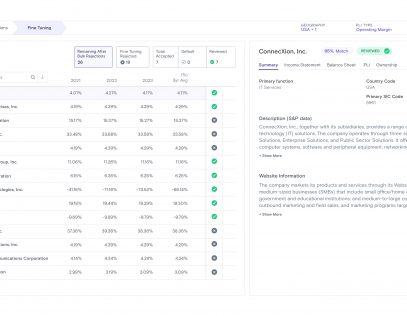We can all agree that it’s important to have the best possible data to measure against for accuracy. This is true for revenue authorities and taxpayers, perhaps one of the few things they actually agree on. That said, what does it mean to have good data? How do you intrinsically know the data is good? Is there a designation like an Underwriters Lab sticker on data that tells you it meets certain standards?
The “good data” standard can typically be measured by getting a clean bill of health from your attest auditors, whether under GAAP or IFRS. But is that enough? Enron, Crazy Eddie, and WorldCom are some of the more memorable defunct companies that for a period of time received “clean” attest audits, but given that they’re no longer in existence, what does that actually say?
The attest process is to see if the books of account present fairly the results of the enterprise. But as we have seen, it is not a process that is designed to uncover a concerted effort by a corrupt management to perpetuate fraud. We shall exclude deliberate fraud from consideration for the balance of this blog.
Good data has to start somewhere and that somewhere is the adoption of the Chart of Accounts, COA. Under both GAAP and IFRS, companies are free to design their COA as they desire, (for purposes of this blog we are not considering industries that have a required reporting format such as Federal Energy Regulatory Commission or National Association of Insurance Commissioners for energy and insurance companies). And with that begins the problems of good and bad data.
Depending on the level of detail in the COA will determine the ability to create accuracy. As a COA is compressed to produce a “thin” COA, there is a loss of specificity as more diverse activity is commingled to “fit into” the “Thin COA”. A corollary consequence of this is the lack of clarity as to what is being combined to create the account. A COA should be as detailed as needed to provide clarity of the activity.
Of course, just as there is flexibility in the definition of the COA under GAAP and IFRS, each country is responsible for their own tax system and the design of forms to accomplish their internal goal of tax compliance. And now for the ultimate irony—given the wide latitude under the accounting principles, a far more aggressive compression of data occurs when completing a tax return. Using the U.S. form 1120 Corporate tax return, the income statement consists of 28 lines. The U.S. Form 1065 Partnership income statement is 22 lines. The Form 5471 for CFCs income statement is 19 lines. There are other forms also, but this is sufficient to illustrate the point, within a single revenue service, there are inconsistent formats for the most basic concept, how to define the income of an entity, which information can be shared with other tax authorities.
So, with all of the above, how do I know what data is good and what data is bad? The truth is I don’t know with any metaphysical certainty, but I have faith in the integrity of the accounting profession to not perpetrate fraud. If I wanted ultimate certainty, I would posit for consideration the adoption of a standardized COA based on each industry, as a starting point, and would require a similar format for taxable income determination across all of the countries willing to share data. Of course, I still believe in the spirit of Christmas while knowing Santa isn’t going to bring me a new laptop but hope springs eternal.









